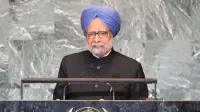PSLV-C6 delivers Cartosat-1 and Hamsat sucessfully
By Our Economy Bureau | 05 May 2005
Sriharikota: The first blast-off from the Indian Space Research Organisation's (ISRO) Rs400-crore launch pad (the ninth flight of India's polar satellite launch vehicle-C6) took place at the Satish Dhawan Space Centre, Sriharikota, this morning.
Exactly at 10.14 am, 18 minutes after the take-off on May 5, 2005, PSLV-C6 successfully placed the 1,560kg remote sensing satellite Cartosat-1 and delivered the 42.5kg-Hamsat piggyback in a 618 km polar sun synchronous orbit (SSO) 30 seconds later.
Soon after the successful placement of the satellites, president A P J Abdul Kalam congratulated the ISRO scientists on their success.
Cartosat-1, the eleventh in the Indian remote sensing satellite series has been built by ISRO for cartographic applications. Immediately after its injection into orbit, the two solar panels were deployed.
The health of the two satellites are being monitored from the Spacecraft Control Centre at Bangalore with the help of ISRO Telemetry, Tracking and Command Network (Istrac) network of stations at Bangalore, Lucknow, Mauritius, Bearslake in Russia and Biak in Indonesia.
Cartosat-1 carries two panchromatic cameras with a spatial resolution of 2.5 metres that takes black and white stereoscopic pictures in the visible region of the electromagnetic spectrum. The cameras has a swath of 30 km and they are mounted in such a way that near simultaneous imaging of the same area from two different angles is possible.
The satellite also carries a solid state recorder with a capacity of 120gigabits to store the images for transmission.
The date from Cartosat-1 is expected to provide enhanced inputs for large scale mapping applications and stimulate newer applications in the urban and rural development, land and water resources management, disaster assessment, relief planning and management, environment impact assessment and various other applications. The data can be used for updating topographic maps, besides generation of large scale topographic maps.
Cartosat-1 will be followed by Cartosat-2 shortly, which will have a spatial resolution of about one metre. This apart a Radar Imaging Satellite (Risat) is also under development at ISRO. Risat is slated for launch in 2006.
Meanwhile Hamsat, the microsatellite for the international community of amateur radio operators (Ham) is India's contribution to the Ham Radio community. The Hamsat will bring ISRO's satellite services within reach of the common man and popularise space technology among the masses.






















